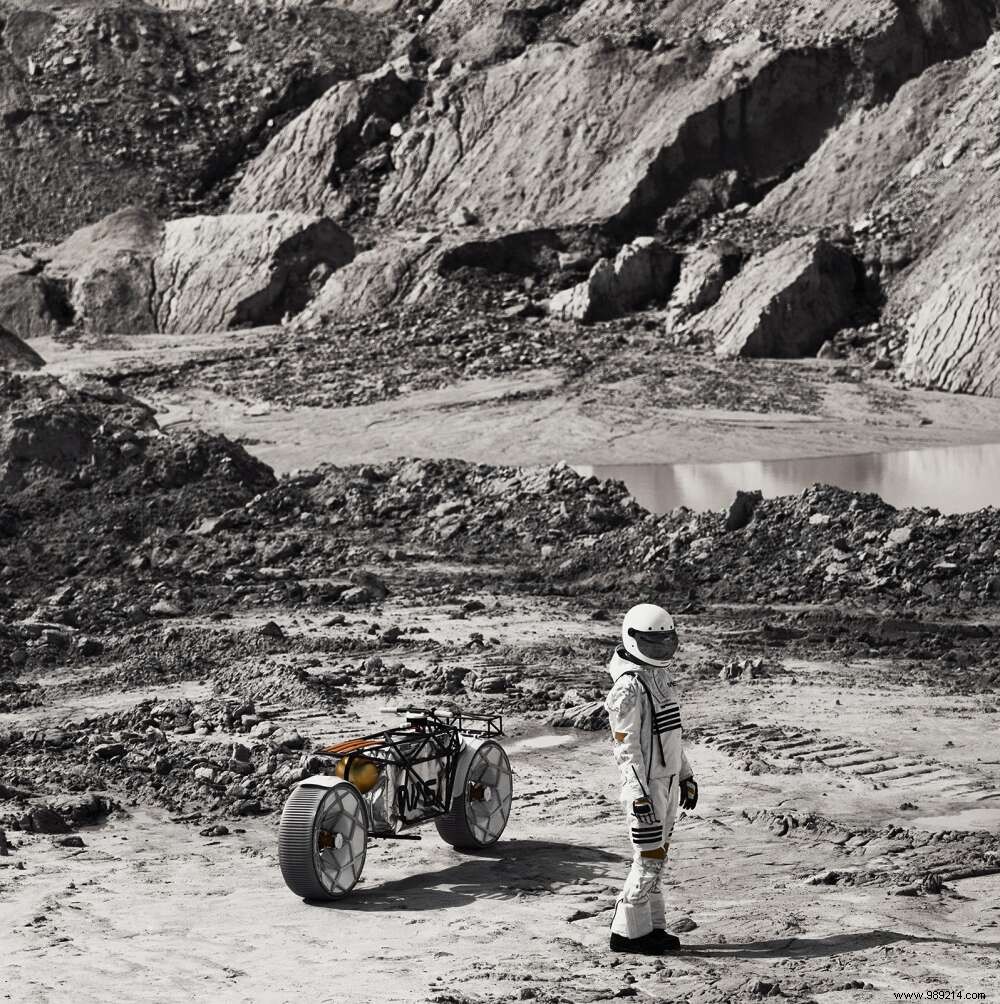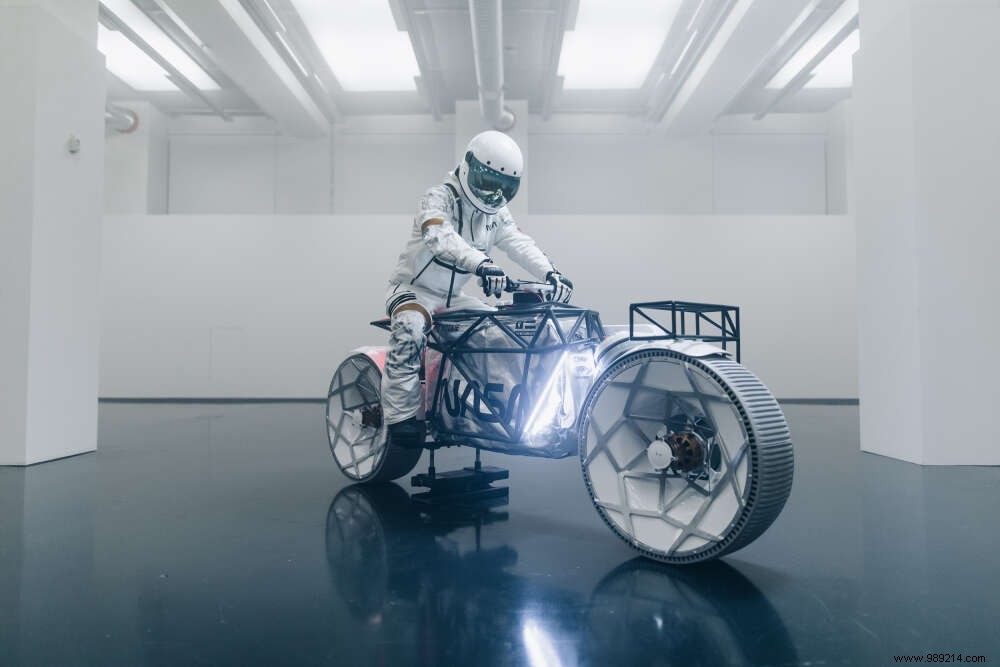The German company Hookie has just presented the first concept of a two-wheeled lunar vehicle. Called the "Tardigrade", their lunar motorcycle, which is currently only a fictitious concept, would be able to evolve on the Moon at a maximum speed of fifteen kilometers per hour.
The lunar rover is a buggy developed for NASA as part of the latest Apollo missions. The first model first rolled on July 31, 1971 as part of the Apollo 15 mission. The two-seater vehicle could carry more than 490 kg of payload at a speed of 14 km/h in a hostile environment (high temperature, low gravity or even rough terrain). It allowed astronauts to survey a greater number of sites, leading to a better understanding of the geology and formation of the Moon.
Real support during the Apollo missions, these vehicles will naturally have a role to play in the years to come. A few months ago, Lockheed Martin and General Motors, two titans of American industry, announced the development of a new electric lunar rover capable of carrying at least two astronauts. This buggy could be deployed as part of NASA's Artemis program which aims to establish a sustainable human presence on the Moon within the decade.
That said, while some are working on the development of four-wheeled buggies, others in Germany are looking at two-wheeled vehicles. Hookie's engineers recently presented their first concept called "The Tardigrade", named in honor of the little water bear known for its incredible capacity for resilience.
According to the manufacturer, this lunar motorcycle would be able to evolve at a maximum speed of 15 km/h , which would be slightly faster than the old NASA rovers. On the other hand, it would be much more manageable.


For this motorcycle, the designers opted for a ultra-thin aluminum frame ten millimeters thick, all wrapped in a "tubular exoskeleton" made of Kevlar, a concept widely used in lunar vehicles to protect against radiation, cold and minor impacts.
The vehicle reportedly weighs a total of about 140kg, about two-thirds the weight of older rovers , while obviously taking up much less space. "A moon buggy would require almost the same space as three or four Tardigrades “, points out Nico Müller, co-founder of Hookie, to Interesting Engineering.
The "Tardigrade" remains only a concept for now, but it could one day become reality. The vehicle will also be presented this month at the Petersen Museum (California) as part of the ADV:Overland exhibition.